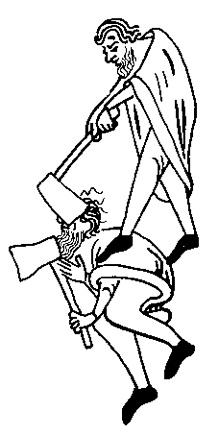An Irish custom?
Published in Early Modern History (1500–1700), Features, Issue 1 (Jan/Feb 2009), Volume 17
Detail from Gerald of Wales’s Expugnatio Hibernica—Irish annals contain occasional passing references to head-taking stretching far back into the Middle Ages.
English literary depictions of crazed Irish head-hunters were not entirely contrived. The best propaganda always contains an element of truth. In parts of Ireland decapitation was more than an incidental by-product of blade-fighting. In Connacht, for instance, one of the chieftains of the Burkes was known as Ulick-na-gceann, ‘Ulick of the heads’ (fl. 1536), so renowned was he for decapitating his enemies. The Irish annals contain occasional passing references to the practice stretching far back into the Middle Ages. Sometimes the annals even provide quite fulsome descriptions, as with an entry in the Four Masters for 1432 that has MacMahon mounting an exhibition of the heads of his foes beside his chief house. Yet beheading was not nearly as widespread among the Irish as English writers claimed. Just as the assertion that they always killed their prisoners was highly exaggerated (hostage-taking was actually a valuable source of élite revenue throughout Ireland), so the collecting and display of heads was normally limited to a ruler’s enemies. Large-scale head-taking was noticed in the annals because it was unusual; indeed, if MacMahon’s endeavours are anything to go by, it was considered excessive, even taboo, the annalist decrying it as ‘hideous and horrible’. Likewise, decapitation was strictly confined to the military classes. Peasants and other non-combatants appear to have been spared.
















